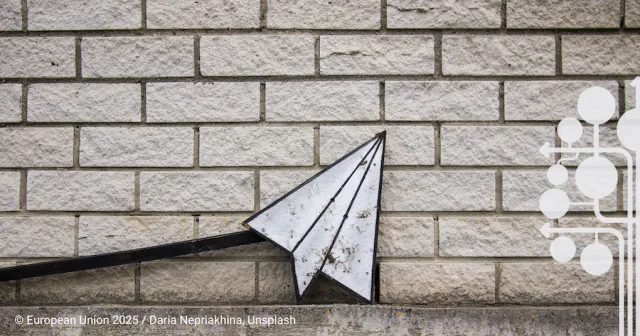Beata Nessel-Łukasik: building relations between the museum and its surroundings

Short biography
I am a PhD sociologist, art historian, curator. Scholar from the Ministry of Culture and National Heritage. First involved with the National Museum in Warsaw and then with the Józef Piłsudski Museum in Sulejówek. I am the creator of the first Department of Local Programs in Poland and co-author of a new concept of the museum. Currently, I am an assistant professor at the Maria Grzegorzewska University in Warsaw and a member of the Muzealnictwo editors.
My EPALE
Establishing relationships between people with different experiences in adult education is made simple, quick and enjoyable with EPALE. On the one hand by using EPALE tools, I can share my experience with others. You just join the relevant group that is already working or create your own post or blog on a topic of your choice. On the other hand, by exploring the resources that EPALE already has at its disposal, I can find both interesting inspirations for new activities and materials enabling me to deepen my knowledge.
My Story
For the last ten years, as a sociologist and researcher working with APS, I have had the opportunity to co-create the process of building a relationship between the Józef Piłsudski Museum in Sulejówek and its surroundings. The basis for starting this cooperation was to see the lack of presence which the local community has in the creation of the museum.
This reflection became apparent to the team during the development of the first activities in the vicinity of the museum back in 2012.
Why do the museum's neighbours not respond to the invitation? Why don't they come through our doors? Is the reason solely that like with many other institutions, museums are seen by the local community primarily as a tourist attraction or educational institution for children and young people?
Without ready answers to such questions, we decided in the following years to deepen our knowledge in an effort to combine the social research of sociologists with the practice of cultural animators.

As a result, we tried to involve various people in the process of involving residents in activities based on the idea of social participation.
On the one hand, they were experts in social research. Employees of the university, who together with the students supported us in carrying out many years of research dedicated to the museum and its surroundings. Thanks to their knowledge and commitment to diagnosing the needs and expectations of the local community towards the new institution, we were able not only to carry out the current activities more freely and confidently, but also to design a museum space for our neighbours.
On the other hand, in the whole process of building relations between the museum and its surroundings and between the institution and the inhabitants and residents of Sulejówek, we also engaged artists and cultural animators specialising in participatory projects and activities in public spaces. In this way, we tried with each subsequent joint action not only to get to know the environment better, but also to arouse curiosity and interest among our neighbours and neighbours for joint actions.
After all, without having our own place, we wanted to involve other communities such as the Society of Friends of Sulejówek or the Senior Club and other cultural institutions adjacent to us, such as the Municipal Public Library or the Municipal House of Culture.
Therefore, starting from the meeting and conversation and then moving on to the joint design of different situations, we gradually involved in our activities people associated with these organizations or institutions. In this way, we first created the Sulejówek Social Archive, and then on the basis of a number of micro-activities and also a local coalition, which finally decided to jointly implement the Zofiówka Festival.

As a result, by conducting social research and regular activities outside the museum every year based on a strategy developed by an interdisciplinary team of museums and researchers, we were able not only to get to know the local community more closely, but also to build a number of different relationships with it, which ultimately resulted in the implementation of the concept of a relational museum (Muzeum relacyjne – Muzeum Józefa Piłsudskiego w Sulejówku) and the creation of the Department of Local Programmes in the Biographical Museum in Poland (Programy lokalne – Muzeum Józefa Piłsudskiego w Sulejówku.
Today, this experience, which inspired other museums, is an example to me of how working with researchers, artists and local leaders can translate into changes both in the structure and program of the museum and in its surroundings. Our process (2013 -2020), which was based on close cooperation between each side, allowed us to first go beyond the debate about the affirmative or critical role of the museum, to involve adults, our neighbours, in designing and making changes for sustainable development.
Did you get inspired by this story? Let us know below in the comments and get the chance to win an EPALE unique gift!
5 users per month (May-November 2021) from those commenting a 2021 Community Story will be picked at random and will receive a gift. Comments must be relevant and related to the topic to be eligible.





